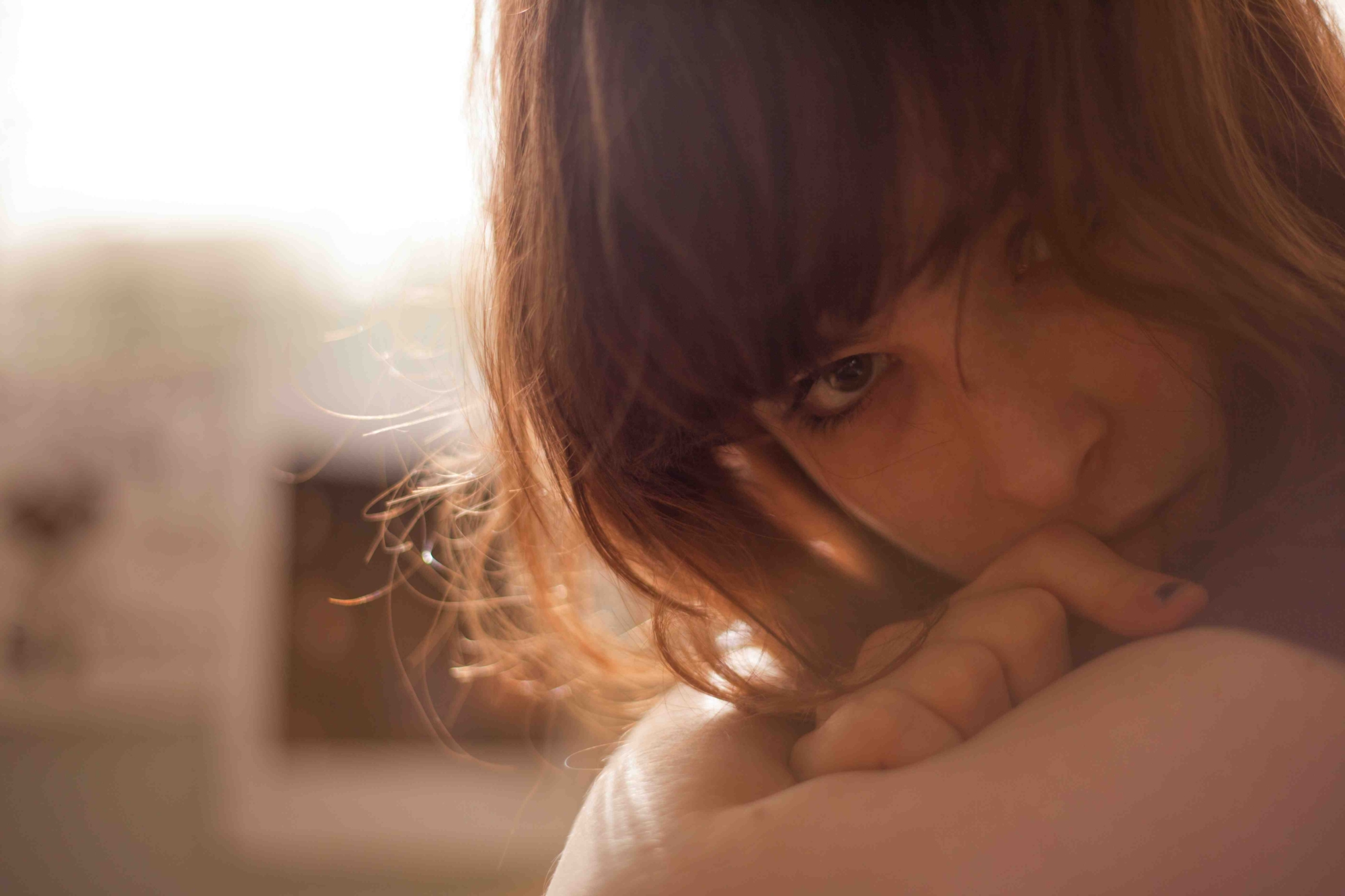Canberra, and the stretch of land that runs across the Southern Tablelands and into the Southern Highlands just south of Sydney, is an area with exquisitely cinematic light. It is soft and clear, with high skies, glittering in winter and hazy in summer. The aesthetic of Canberra itself, with its stretches of pale, dusty brown bush marked by blocks of concrete, reminds me of the spare scrub and concrete landscapes adored by quintessential modernist director Michelangelo Antonioni. A city planned around the bush and limestone of its original landscape, Australia’s capital is simultaneously contained and wild. Situated in a valley with the Brindabella Ranges hovering on the horizon, it is the perfect setting for a film that explores the close absorption of teenage life.
In January 2003, bushfires burning in the Brindabella and Namadgi national parks broke containment lines and burnt into the western edge of the city, destroying homes in several suburbs. Writer and director Rhys Graham’s debut fiction feature, Galore (2013), takes place in these south-western suburbs during the weeks before the disaster, and the developing fires burn in the background throughout the film. Graham grew up in this area, and his familiarity with the landscape is one of Galore’s strengths. These outer suburbs are a place of transition, a wide open mix of rural and suburban zones that reflect that liminal period of life when time is unstructured and during which space – to move, to desire and to wonder – seems unbounded. Here, the domestic blurs into the world, as long backyards drift into paddocks and streets, quiet enough for children to play in, lead out of the suburbs in an unbroken line. The specificity of this place provides a firm ground for Graham’s characters, and the rhythm of their days is shaped by this landscape. The long stretches of sun-drenched footpath flanked by bare paddocks, the nearby dry scrub leading down to Kambah Pool, the lazy flow of the river and the emptiness of the roads give the film its temporal spine. The characters, and the camera following them, run, dance, float and ride contrapuntally to this overarching flow.
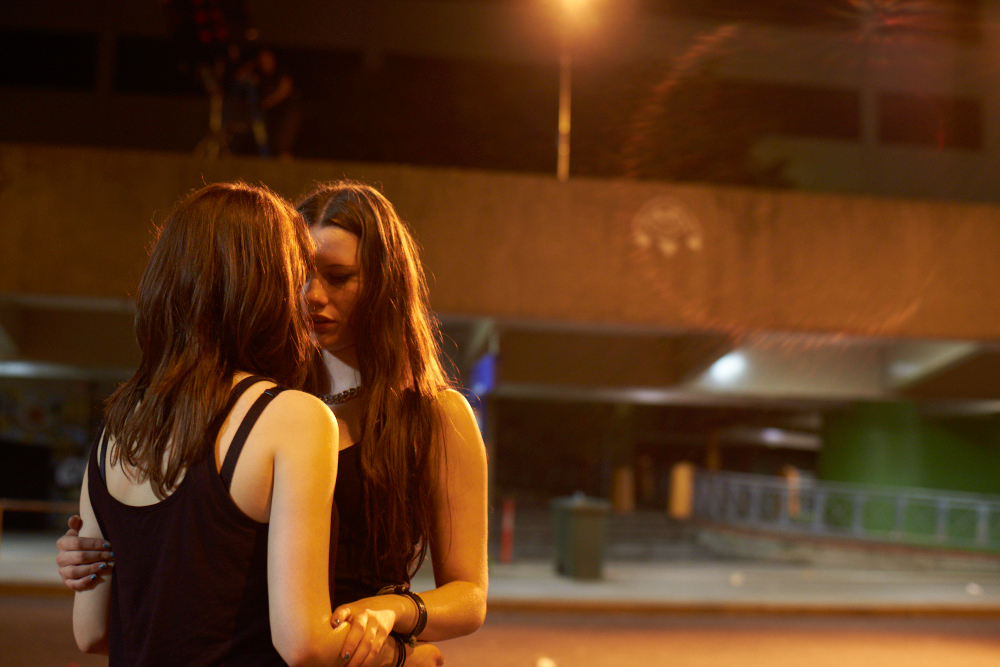
Billie (Ashleigh Cummings) and her best friend, Laura (Lily Sullivan), are hovering on the cusp of adulthood. Waiting to begin their final year at school, the girls drift together through the expanse of a summer without plans. Billie is fiery and impulsive – a character reminiscent of the explosive Mia (Katie Jarvis) in Andrea Arnold’s Fish Tank (2009) – while Laura is steadier, dreaming of becoming a writer. Their days are filled with swimming and lazing and travelling between places; on bikes, on foot and in buses that draw a circuitous route through the warren of streets like a wandering psychocartographical line. Galore is a film of movement. Even when the girls are still, you can sense the motion held in their bodies – an irrepressible energy evoked by the restless camera work. ‘The camera was motivated by Billie’s movement,’ cinematographer Stefan Duscio tells me via email. ‘It is agitated and restless, like her energy.’
The close relationship between the camera and Billie’s movement is demonstrated in a beautiful moment at the beginning of the film. Billie is making out with the boy she loves, Danny (Toby Wallace), in the back of an abandoned car. As they kiss, the camera hovers close to their faces. It spins around so their faces are upside down, holds, then rights them again, the image performing the dizzy feeling of two bodies wanting each other. The movement shudders with the thoughtless, blood-rushing electricity of lust. The beautiful moment of hesitation as the two faces hover, mouths at the top edge of the frame and eyes at the bottom, charges the shot with a tremor of anxiety, before plunging into desire as the two bodies cling to each other, enclosed tight in the rusting metal bubble. In the following shot, Billie welcomes in the new year with Laura. They are in an open-air mall or a skate park, a stretch of blue-grey concrete filled with teenagers, drinking and touching and hanging. When Danny arrives, he and Laura embrace. He is not Billie’s boyfriend, but Laura’s.
Galore is a film of movement. Even when the girls are still, you can sense the motion held in their bodies – an irrepressible energy evoked by the restless camera work.
This eloquent sequence of shots introduces the characters and the tensions between them; however, it is not the film’s true opening. Galore’s very first scene is of Billie walking along a grassy verge accompanied by a voiceover – her own older voice. She explains that what we are about to see has already happened. By now, she says, the bushfires have burnt these suburbs, and it all already feels so long ago. This expository frame sets up an unambiguous story structure that, I will argue, ultimately works against the film style. Galore works with the kind of sensuous imagery that has the potential to open up narrative possibilities, but the overly heavy plotting weighs the film down, curbing its visual competence.
Billie plans to spend the summer in blissful teenage laziness, circling between the house, the backyard and the river. But her authority over the domestic space is interrupted when her mother, Carrie (Maya Stange), invites Isaac (Aliki Matangi) to live in their backyard caravan. Isaac is trying to change and stay out of trouble, and Billie resents both his quiet presence and Laura’s growing interest in him. Laura hangs around the caravan trying to chat and gives Isaac a copy of her favourite book, Junot Díaz’s short story collection Drown. Gradually, Isaac is drawn into the girls’ circle, bringing with him a fourth current of tension and desire as he begins to reciprocate Laura’s attraction.
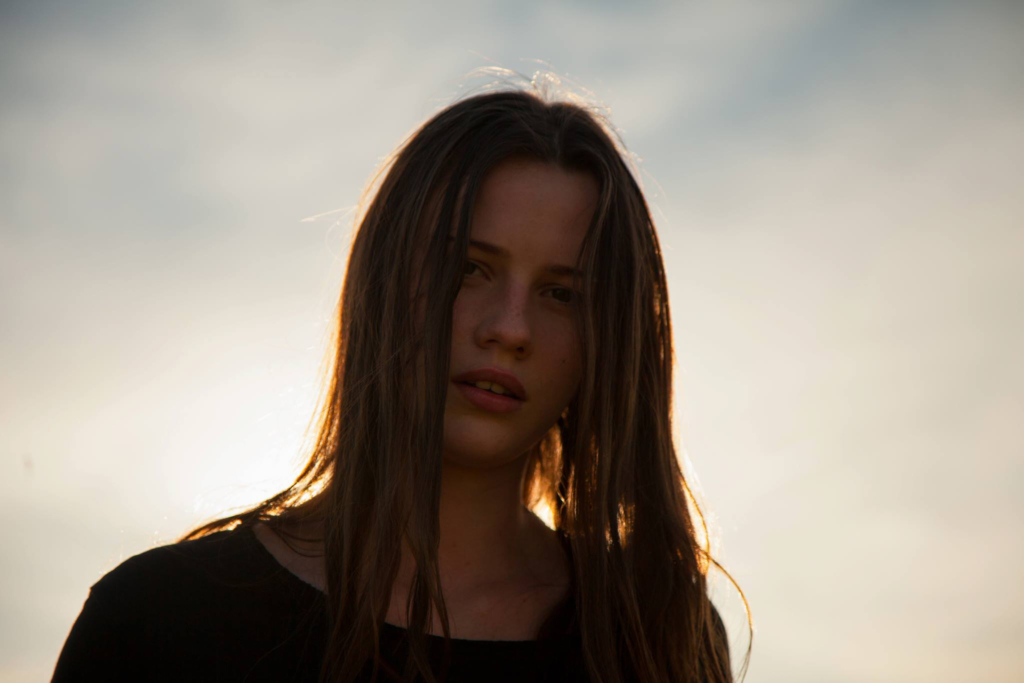
On a slow, hot night, the girls go to a house party. Isaac reluctantly goes along with them. This decision is followed by a series of highly dramatic events: Billie gets into an argument with a boy she has been making out with. Isaac punches the boy in the face, knocking him out. Billie steals a car from the party and takes the other three protagonists on a joyride. They crash the car in a dramatic swerve and roll, and, although the car is written off, no-one appears hurt. They return to the party and pretend nothing has happened. Soon after, Isaac is accused of stealing the car and is kicked out of the caravan. Laura – who has sustained a head injury from the accident – begins fainting and, after refusing to see a doctor, dies. Through all this runs another line of violence as a couple of older boys track Billie’s movements, ducking and weaving in and out of the narrative on a collision course with Billie’s jagged trajectory.
While the excessiveness of the storyline reflects the excess of Billie’s emotional experience, the film’s conventional three-act structure ties everything together in a way that denies the pleasure of the unknown. When I think of the best iterations of characters like Billie – Mia in Fish Tank, Vicky (Shu Qi) in Hou Hsiao-hsien’s Millennium Mambo (2001) or the lonely Killer’s Agent (Michele Reis) in Fallen Angels (Wong Kar Wai, 1995) – they appear to me to be simultaneously present, pushing energy into the screen, and uncontainable, sending that energy out in all directions. Watching them, I’m always haunted by the feeling that they might just not be there in the next scene. In Galore, this suspense is stamped out because the narrative possibilities are closed from the very beginning. Billie’s opening narration suggests she has ‘grown up’ in the most conventional sense rather than, like Millennium Mambo’s Vicky, simply leaving the film. Each event in Galore follows the one before it with simple cause-and-effect, travelling towards an outcome that has already been established. I have not been able to put my finger on the reason why I feel this way, but, for me, the final metaphorical link between the fire’s intensity and brief-but-lasting trail of destruction and Billie’s impetuous behaviour and resulting grief does not work. I do not mean to suggest that Graham has used the blaze in a glib or exploitative way, but simply that, in the context of the film, the two events do not quite seem to fit together.

Galore is at its best when it plunges into the physical throng of teenage life. Duscio notes that, in preparing to shoot the film, he and Graham used teenage photography as a point of reference, and the film celebrates the curiosity about the body often displayed in such work. There are resonances with the immersive perspective of Olivia Bee (the moniker of Olivia Bolles), a young photographer whose Flickr feed brought her to prominence when she was just fourteen. Bee’s images capture the teenage body as it is absorbed in the motions of daily life. Her technique embraces a joyful, experimental aesthetic that mirrors her subjects’ state of becoming. Ken Miller describes Bee’s aesthetic as one of ‘immediate nostalgia […] a reminiscence of a moment that she is currently experiencing and regrets having to leave behind’.[1]Ken Miller, ‘Everyday: A Visual Tale of Teenage Life’, Foam, no. 26, Spring 2011, p. 110. With their casual framing, light leaks and missed focus, they look more like memories than snapshots.
Graham and Duscio give Galore a similar feeling of moments simultaneously lived and remembered. There is a hazy shot of Laura and Danny lying in bed through a half-closed door. There is one of Billie and Laura top-and-tailing in a hammock while Billie paints Laura’s toenails. The specificity of Billie’s life is built up through closely recorded details. There is a shot of Billie sitting against the back wall of her house, the wall behind her marked by patches of paint as though her mother had decided to paint the house one day but never got beyond testing colours. For me – possibly because I grew up in a house marked by patches of test colour – that little patch of wall reveals more about Billie and Carrie’s life together than any of the story events.
While the excessiveness of the storyline reflects the excess of Billie’s emotional experience, the film’s conventional three-act structure ties everything together in a way that denies the pleasure of the unknown.
By the same token, moments of physical abandon are accentuated by the free and mobile camera work. The house party is shot from within the throng of dancing, shouting bodies. We see arms, legs and hair, hands clutching bottles, stomachs rolling and turning. Out the back, a group of kids spin in a blow-up pool, and as the water swirls around their faces the image becomes a blur of rushing limbs and lips and teeth and water. Billie and Laura and Danny and Isaac all get pulled into the pool, and the shifting expressions on their spinning faces recalls the frenetic effect of the fairground scene in Jean Epstein’s Coeur fidèle (1923), in which the ride that Marie (Gina Manès) and the antagonist Petit Paul (Edmond Van Daële) are on spins round and round in an ecstatic movement that seems ever on the verge of spilling out into violence.
Towards the end of the film, when the trajectory of the older, thuggish boys in their beat-up car collides with Billie’s line of flight, the film embraces the cinematic possibilities – the visual, aural and kinetic qualities – of the near-dark. As the image gives way to a shadowy trace of camera movement and the sound of bodies rushing through the scrub, the film becomes one of feel rather than sight. The camera senses its subjects, tilting and turning as their movement cracks the brush underfoot. In the dark, the pockets of bush by the road seem completely isolated. The camera’s jagged motion performs Billie’s fear, even when she acts tough.
But in the daytime, this stretch of verge is familiar and unthreatening. As mentioned, one of the best things about Galore is the way the exterior space is presented as an extension of the domestic. The girls move from their bedrooms to the river as though the latter were a mere room along the same hallway, and the land in between appears intimately theirs. Their bodies know its contours, and they float along footpaths and scramble down the dirt track to the river with the blind movements of the body on familiar ground. Kambah Pool, Scrivener Dam, the skate park, and the roads and footpaths that link them appear through the lens of someone who knows them well. Each location has its own texture: the rough concrete of the skate park, the hot bitumen of the road, the gritty river sand on the banks of Kambah Pool, the rusty metal of the abandoned car, the salty heat of the chicken shop and the lightness of the river water. The corner of the tiny shopping strip where we find the girls’ workplace – Kingsley’s, a chicken-and-chip chain that I’ve never seen anywhere but Canberra – is shot front-on and from just far back enough that it appears like an anti-oasis in the middle of a suburban wasteland. It is the kind of place frequented only by people who live nearby.
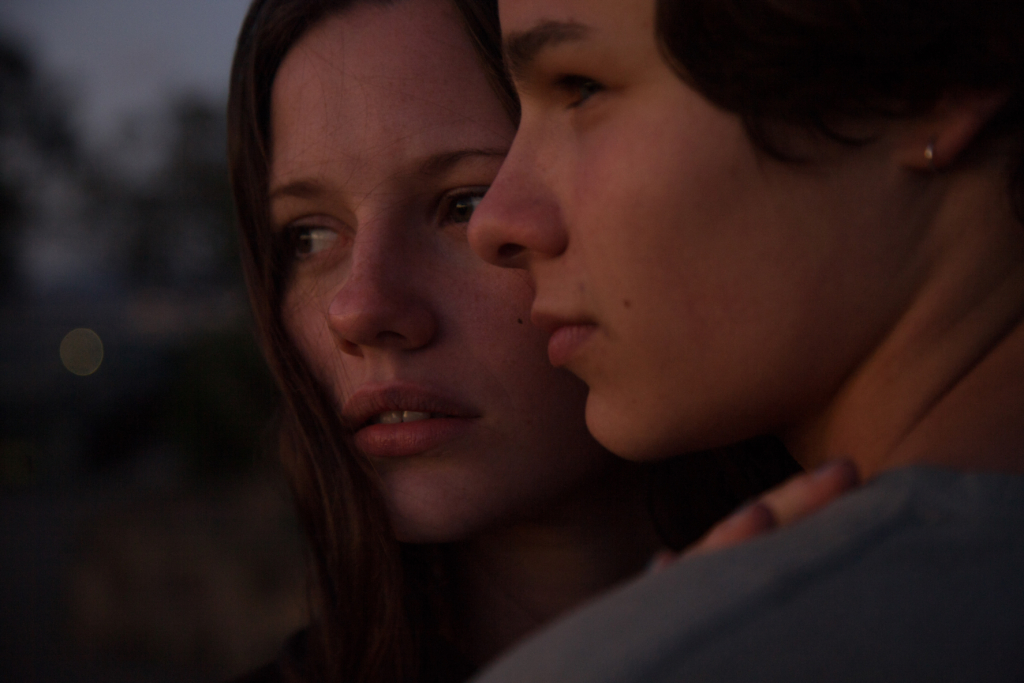
Graham also has an eye for how Canberra might look to someone unaccustomed to its spare, bush-city look. The shots of Scrivener Dam, with its heavy steel gates, are particularly otherworldly. There is a moment when Billie hangs dangerously over the edge and the hulking shapes of the wall mechanism loom behind her like a giant concrete and metal crater.
Like Words from the City, a documentary about young Australian hip-hop artists that Graham made with Natasha Gadd in 2007, Galore wonders how the place we live in shapes us. Words from the City shows how place manifests in the style of the young artists: in their choice of words and in the rhythm of their hip-hop – their flow. Billie and Laura flow both with and against the cyclic rhythm of their suburb, where change comes more frequently from the natural environment than the urban. They dream of leaving, but they do not yet know what that means, nor that the shock of familiarity only comes after a place has ceased to be part of your everyday. The spaces you grow up in become part of you; you carry traces of them in the way you move, in the rhythm of your speech, in the landscapes that draw you in, in the way a certain kind of light makes you stop and draw breath. I recognise the dreaming, somnambulant drift of Billie and Laura’s summer as being particularly rooted in Canberra because their summers were mine, and my own memories of their places inflect the way I see the film’s shots. How will these spaces shape Billie? I don’t know – I’m not even really sure how they’ve shaped me. But when I see Billie hanging over the dam, I feel a sudden, intense jolt of knowing myself. This is not because I relate to Billie as a character (I find her a bit annoying and prefer Laura), but because looking at the image of the dam; of the grass, like dashes of ochre over the hills; of the clear, high light and dry gums is like looking into my own face, beyond my skin and recognising me. When the bushfires sweep into the suburbs and the area is evacuated, Billie’s older, wiser voice kicks in again. The film suggests that, for Billie to truly grow, the places that have shaped her must also be transformed. In some way or another, this happens to us all: the sites of our becoming are fixed only in our memories.
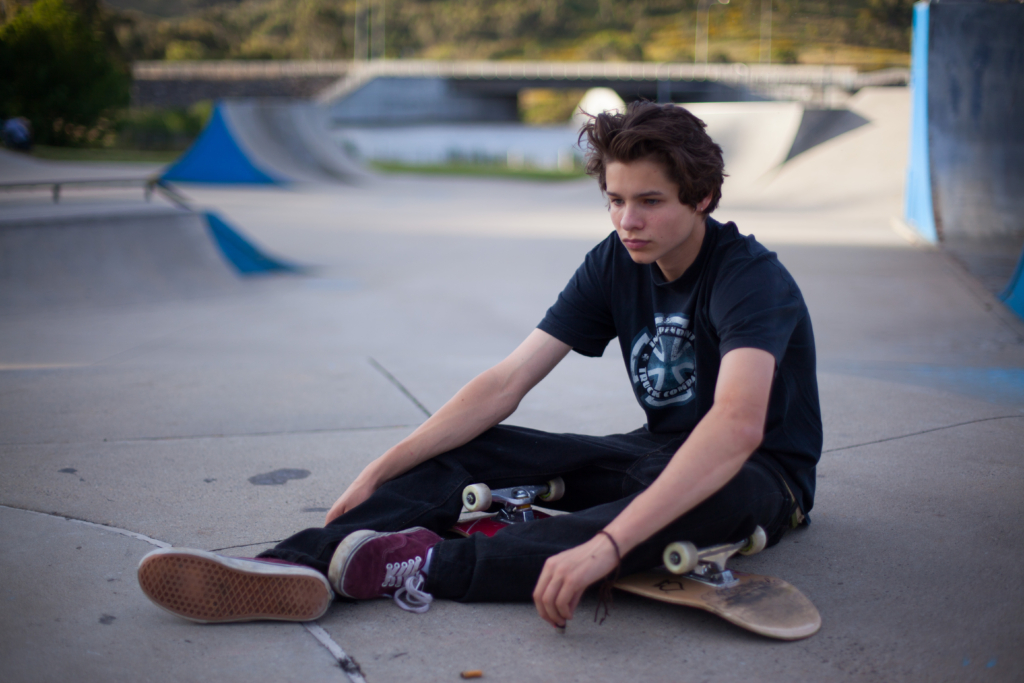
Graham keeps a blog, The Buoy Archives,[2]Rhys Graham, The Buoy Archives, <http://thebuoyarchives.blogspot.com.au>, accessed 1 April 2014. in which he posts snippets of inspiration, photographs and shots of films he admires. Scrolling through the references to the great filmmakers of the body – Claire Denis, Tsai Ming-liang, Andrea Arnold, John Cassavetes – I can see what he was aiming for in Galore. And while it doesn’t quite stand up to rigorous narrative analysis, in its textural images and explosive performances I can see the film it might have been. It seems others have, too – after its premiere at the Melbourne International Film Festival in 2013, the film was selected for the 2014 Berlin International Film Festival’s Generation program and subsequently screened at the International Children and Young People’s Film Festival in Malmö, Sweden, and at the Gold Coast Film Festival. If Graham can throw off the shackles of too-careful plotting and embrace the light and movement he clearly adores, his next film will be something to look forward to.
Canberra, and the stretch of land that runs across the Southern Tablelands and into the Southern Highlands just south of Sydney, is an area with exquisitely cinematic light. It is soft and clear, with high skies, glittering in winter and hazy in summer. The aesthetic of Canberra itself, with its stretches of pale, dusty brown bush marked by blocks of concrete, reminds me of the spare scrub and concrete landscapes adored by quintessential modernist director Michelangelo Antonioni. A city planned around the bush and limestone of its original landscape, Australia’s capital is simultaneously contained and wild. Situated in a valley with the Brindabella Ranges hovering on the horizon, it is the perfect setting for a film that explores the close absorption of teenage life.
Endnotes
| 1 | Ken Miller, ‘Everyday: A Visual Tale of Teenage Life’, Foam, no. 26, Spring 2011, p. 110. |
|---|---|
| 2 | Rhys Graham, The Buoy Archives, <http://thebuoyarchives.blogspot.com.au>, accessed 1 April 2014. |
